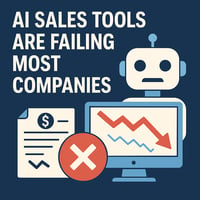Twitter's Steep API Fees Challenge Partners to Innovate and Adapt
%20(1024%20%C3%97%20512%20px).png?width=1024&height=512&name=Sage%20Elegant%20New%20Blog%20Post%20Instagram%20Post%20(300%20%C3%97%20175%20px)%20(1024%20%C3%97%20512%20px).png)
Hey there, tech enthusiasts! We've got a hefty issue to dissect today – Twitter's new policy on charging for API access. This fresh twist is giving some of our software pals, like Tapclicks and Callrail, quite a tough time. Don't worry; we're going to break it all down for you and explore what it all means for organic reporting. And, for all you ad buffs, rest easy. This won't mess with your advertising API calls.
Twitter is sort of like the town square of the internet, right? It's where we all gather to share our thoughts, catch the latest news, and indulge in a bit of meme appreciation. Now, imagine if the town square started charging you to speak up. It doesn't seem fair, right? That's the storm Twitter has stirred up by deciding to charge for API access.
APIs, for those who need a quick refresher, are what let different software talk to each other. They're the bridge that connects Twitter to other applications, like Tapclicks, and lets them work together to provide a more enriched user experience.
Now, Tapclicks is a standout in the digital marketing space, known for its robust reporting capabilities. It has relied on Twitter's API to feed its platform with organic data—insights into regular, non-ad content that businesses post on their Twitter accounts. You know, the kind of data that helps businesses understand how their posts perform without splurging on ads.
However, Twitter's new API access fee has put a spanner in the works. Tapclicks, along with many other partners, now face a dilemma. Either fork out the cash to continue bringing in organic data or lose a significant part of their services. This isn't a choice made lightly for a platform that's big on data.
You might be thinking, "Well, Twitter has to monetize somehow, right?" Absolutely! No one's denying that. But, this strategy seems to have left its software partners in a lurch, as they struggle to adapt to these unexpected, and let's be honest, rather hefty fees.
Here's the kicker: Twitter's policy isn't affecting everyone equally. Advertisers, who use APIs to automate ad campaigns and pull reporting data, are seemingly off the hook. Their API calls are not impacted by this policy change. But why the discrepancy, you ask? Well, it seems Twitter is drawing a line between organic content and ad content, and the distinction has left software partners who rely on organic data scrambling.
This change will have long-term implications for platforms like Tapclicks and their customers. It will restrict access to vital organic performance data for businesses, making it harder for them to understand their audience and refine their content strategy.
In a nutshell, Twitter's new API pricing policy is causing quite a stir. While the shift might seem purely commercial from Twitter's perspective, it's causing seismic changes for partners reliant on organic data. On the flip side, advertising operations remain unaffected.
The company says older tiers will be deprecated “over the next 30 days.” Here’s a short summary of the three replacements (which can also be found on Twitter’s website):
- Free — Write-only access with the ability to post 1,500 tweets per month at no cost.
- Basic — A $100 per month subscription for hobbyists with the option of posting 3,000 tweets per month at the user level, or 50,000 tweets per month at the app level. The read limit is 10,000 tweets.
- Enterprise — Promises to offer “commercial-level access that meets your and your customer’s specific needs” as well as “managed services [from] a dedicated account team.” No specific price was listed, but Platformer previously reported that a “low-cost enterprise plan” could cost as much as $42,000 a month.
Twitter Fee Breakdown
As the dust settles, it will be interesting to see how these software partners adapt. Maybe we'll see new business models emerge, or perhaps Twitter will revisit its decision. Until then, it's clear that the dance between APIs, data, and dollars is going to keep us all on our toes. Stay tuned!



